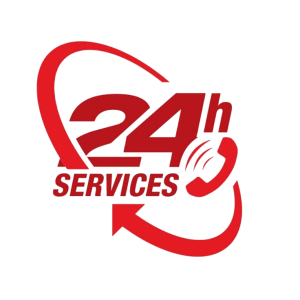A guide to affiliate marketing is one of the most popular ways to generate income online. Whether you’re fresh in the industry or a veteran , understanding the core strategies is essential to your achievements. Learning affiliate marketing is easy to understand for building a business . In its simplest form, affiliate marketing involves sharing a brand and getting a cut when someone makes a purchase through your referral link.
Read more: QUORA.COM (adult affiliate programs)
Here’s how it works :
1. Select an affiliate service .
2. Discuss the product to your network.
3. Earn commissions based on clicks .
Affiliate program selection is one of the most important steps in affiliate marketing. Here are a few tips to lead you in the right direction:
1. Look for a program with a great payout .
2. Ensure the product aligns with your audience’s needs .
3. Choose products that are trending.
4. Check the program’s track record to avoid scams .
Content creation is the key to driving traffic . Whether you choose to run ads , the goal is to entertain with your audience. Here’s how you can make your content stand out:
1. Create content that solves problems for your audience.
2. Use infographics to drive clicks .
3. Embed your affiliate links seamlessly within your content to boost engagement.
Attracting traffic to affiliate offers is the next step. Here are a few ways to attract visitors :
1. Leverage Facebook, Instagram, Twitter .
2. Promote through Facebook Ads .
3. Create a community .
4. Optimize your content to get found by more people .
Winning in affiliate marketing requires a combination of methods. It’s not about quick success but building a profitable income stream. By creating high-quality content , you can turn affiliate marketing into a profitable business.
Remember, success in affiliate marketing is all about building relationships . Stick to these basic principles and adapt to changes as needed, and soon, you’ll see results .
Affiliate marketing is one of the lucrative ways to build revenue online. In affiliate marketing, the goal is always to generate sales through various types of affiliate conversion. To achieve this, understanding the different types of conversions in the context of paid campaigns is crucial for maximizing income.
This article covers the key types of affiliate conversions, as well as how you can optimize them when using paid traffic strategies. Let’s dive into the strategies :
### Defining Affiliate Conversions
Affiliate conversions refer to the behaviors a user takes that lead to receiving a commission for the affiliate. These actions are tied to marketing offers through unique affiliate links. The conversion rate is the barometer of success for affiliate marketers. In the world of paid traffic, conversion types can vary widely, depending on the campaign goals and traffic quality.
Affiliate marketing with paid traffic involves understanding the types of conversions that matter the most to your affiliate program and how you can leverage paid traffic to optimize these conversions.
### Understanding Different Affiliate Conversion Types
1. ** Product Purchase Conversions **
One of the most common forms of affiliate conversions is the transaction conversion. This occurs when a user clicks on your affiliate link and completes a transaction . This type of conversion often represents the highest form of affiliate conversion, as it leads to a direct profit . When using paid traffic, you’ll want to drive users who are most likely to make a purchase, thus leading to higher conversion rates.
2. ** Sign-up Conversions **
Lead conversion involves capturing the details of a visitor, typically through a sign-up page. While this type of conversion doesn’t immediately generate a sale, it creates a potentially profitable lead that can be nurtured over time. With paid traffic, you can target users who are researching your product, allowing you to build a customer base that can be converted into sales in the future.
3. ** Click Conversion Events **
Some affiliate programs count traffic actions as conversions. These are often used when affiliates are paid based on performance metrics such as Cost Per Click (CPC). In this model, the goal is to push visitors to click on the affiliate link, whether they convert into a sale or lead. Click-through conversions focus more on action and typically work well with campaigns aiming for visibility over immediate sales.
4. ** Software Download Conversions **
In mobile or software-based affiliate marketing, mobile conversions are common. This is when a user clicks on your affiliate link and installs a mobile app or software. For affiliates promoting mobile apps, targeting users who are likely to use the app is critical. This type of conversion often has a easy entry and can be very effective for affiliates in the mobile space.
5. **Subscription Conversions **
Some affiliate programs pay affiliates for generating monthly recurring billing . These types of conversions are very attractive because they bring in ongoing revenue. With paid traffic, it’s important to target individuals who need subscription-based services, as these conversions often have long-term earning potential.
### Strategies to Improve Conversion Rates
Optimizing affiliate conversions with paid traffic involves multiple strategies, each designed to improve the conversion rate. Here are a few tips on how to refine your affiliate conversion efforts using paid traffic:
1. ** Finding Your Ideal Audience **
Paid traffic allows you to target specific audience groups. To maximize affiliate conversions, you should optimize your audience targeting to ensure that you are reaching users who are ready the product or service you’re promoting. The more relevant your traffic is, the better your conversion rates will be.
2. ** Landing Page Optimization **
A landing page is where visitors are guided after clicking on your affiliate link. It’s critical that your landing page is optimized for sales . This includes using clear calls-to-action (CTAs), offering solutions , and ensuring that the page loads quickly and is mobile-friendly.
3. ** Test Different Ads **
A/B testing allows you to test different versions of your landing page, ad copy, or creative to determine what resonates best with your audience. This process helps you identify the most effective copy to maximize conversions. Running regular tests will allow you to optimize your campaigns for better performance.
4. ** Using Retargeting to Increase Conversions**
Retargeting is a powerful tool that allows you to follow up users who have visited your site but did not convert. This type of remarketing helps you increase the chances of conversions by showing them relevant ads based on their previous interactions with your site.
### Conversion Tracking Tools
Tracking affiliate conversions is critical for understanding how well your paid traffic campaigns are performing. Using tools like Google Analytics, affiliate networks, or custom tracking software can help you evaluate the success of your campaigns. By analyzing data such as clicks, impressions, sales, and leads, you can improve your strategies and ensure that your efforts are yielding the best possible results.
—
**Conclusion:**
Affiliate marketing requires a thorough understanding of the different types of conversions and how they relate to your paid traffic efforts. Whether you are optimizing for sales , understanding and focusing on the right conversion type can greatly improve your affiliate marketing efforts.
By utilizing strategies like audience targeting, A/B testing, landing page optimization, and retargeting, you can increase your conversion rates and make the most out of paid traffic. Remember, affiliate marketing success is built on understanding conversions, targeting the right people, and continuously testing and refining your approach.
Expert Tips for Dominate Affiliate Programs with Social Media Ads to Faster Growth while Sales Growth in the Digital Age .



